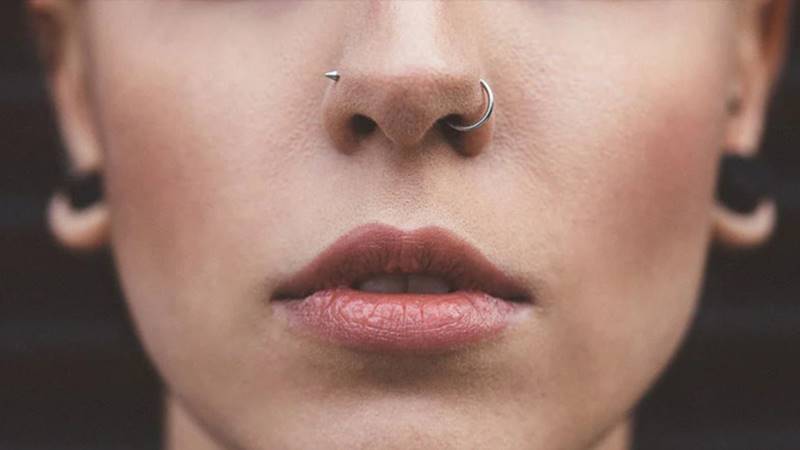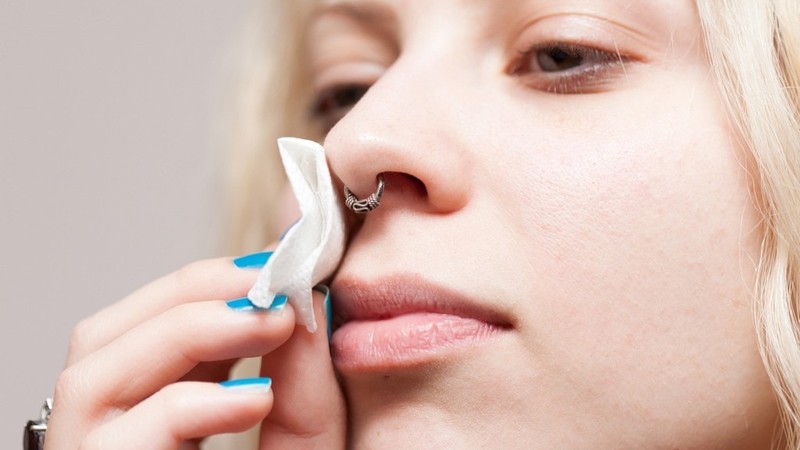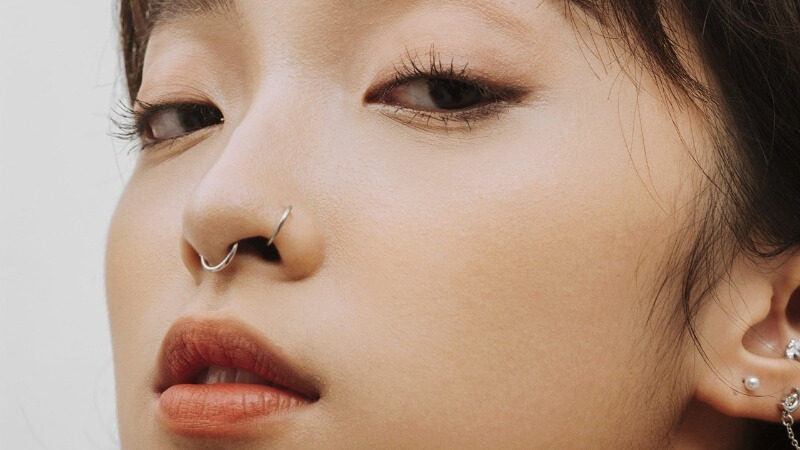Nose piercing is a popular choice for self-expression, especially among the youth. But what is involved in the process, and is it painful? Let’s explore these questions and more in the following article.
1 What is Nose Piercing?
 What is Nose Piercing?
What is Nose Piercing?
Nose piercing is a form of body art that involves using a specialized needle to puncture and create a hole in the nose for jewelry. Similar to ear piercing, it requires skilled professionals who can ensure a safe and precise procedure.
2 Common Nose Piercing Locations
 Common Nose Piercing Locations
Common Nose Piercing Locations
Nose piercings are typically categorized into two main types, depending on personal preference and desired style.
- Nostril Piercing: This is a popular choice, usually placed on either the left or right nostril. It adds a unique touch of personality to your look.
- Septum Piercing: This piercing is located in the thin strip of tissue between the nostrils, also known as the septum. It gives you a bold and unconventional style.
3 Does Nose Piercing Leave Scars?
 Does Nose Piercing Leave Scars?
Does Nose Piercing Leave Scars?
Any type of piercing, including nose piercing, can leave scars if not properly cared for. However, using high-quality piercing needles and maintaining diligent aftercare can help minimize the risk of scarring.
4 Is Nose Piercing Painful?
 Is Nose Piercing Painful?
Is Nose Piercing Painful?
Nose piercing is generally considered less painful compared to other piercing locations, such as the upper ear cartilage or lip. The healing process is also typically faster and less complicated.
However, it’s important to choose a reputable and hygienic piercing studio to ensure a comfortable and safe experience.
5 Risks Associated with Nose Piercing
 Risks Associated with Nose Piercing
Risks Associated with Nose Piercing
The nose is located in the “triangle of danger” on the face, an area between the eyebrows and upper lip. The veins in this region connect to the sinus cavity, so nose piercings carry certain risks, including:
- Infection: Poorly sterilized equipment can introduce bacteria, increasing the risk of infections, including HIV, Hepatitis B, or tetanus.
- Bleeding: Septum piercings may bleed more than nostril piercings and can lead to bruising, hematoma formation, or infection.
- Allergic Reactions: Certain jewelry materials can cause allergic reactions if they contain unsuitable components.
- Scarring: Improper piercing techniques or aftercare can result in scarring.
6 What to Avoid After Getting a Nose Piercing
 What to Avoid After Getting a Nose Piercing
What to Avoid After Getting a Nose Piercing
After getting your nose pierced, there are a few things you should avoid to minimize potential health risks:
- Swimming: Refrain from swimming in public pools or the ocean for at least two weeks to prevent infection.
- Makeup: Avoid applying makeup near or on the piercing site for 1-2 months to reduce the risk of infection.
- Contact Sports: Limit participation in sports that involve physical contact to prevent injury to the piercing site.
7 Important Considerations for Nose Piercing
 Important Considerations for Nose Piercing
Important Considerations for Nose Piercing
To ensure proper aftercare and protect your new piercing, keep the following in mind:
- Choose a reputable piercing studio with skilled professionals to perform the procedure.
- Select jewelry suitable for your piercing location and made from safe, hypoallergenic materials to reduce infection risk.
- Wait until your nose piercing is fully healed before changing jewelry.
- Maintain good hygiene by regularly cleaning the piercing site and avoiding touching it with unwashed hands.
- Avoid irritants that may come into contact with the piercing, as they can cause discomfort and increase the risk of infection.
This article has provided an overview of nose piercing, including the process, aftercare, and potential risks. Remember to prioritize your safety and choose reputable piercing studios to ensure a positive experience. We hope this information helps you make informed decisions about nose piercing and enhances your self-expression journey.
Source: Long Chau Pharmacy































